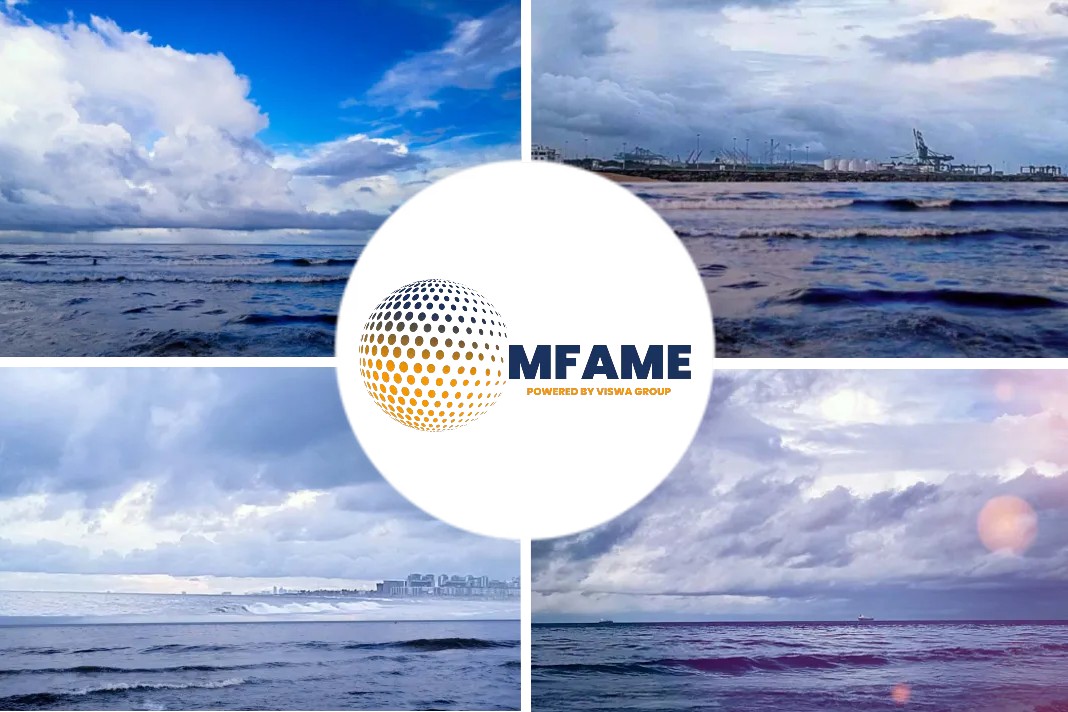Damage to the bow (Vessel A)
Summary:
At around 09:27:27 on August 7, 2016, the chemical tanker EASTERN PHOENIX was proceeding south-southwest toward Uraga Channel, after leaving the Kawasaki Passage of the Kawasaki Section of Keihin Port with a master and 14 crew members onboard, when the two vessels collided off to the southeast of Higashi-Ogishima Island in Kawasaki City, Kanagawa Prefecture.
EASTERN PHOENIX had a dent and other damage to her bow’s shell plating and KEIHIN MARU No. 8 had a hole and other damage on her port bow that resulted in a spill of light oil she was carrying as cargo onto the ocean’s surface.
There were no fatalities or injuries on either vessel.
Damage to the starboard midship (Vessel A)
Damage to the Vessels:
- It is probable that Vessel A had a dent and breach in her bow shell plating and dents and other damages in her bulbous bow and starboard midship shell plating.
- Vessel B had dents and breaches in her port bow’s fender and bottom and a dent and other damage to her port stern fender.
Damage to the port bow (Vessel B)
Probable Causes:
It is probable that the accident occurred when, as EASTERN PHOENIX (hereinafter referred to as “Vessel A”) was proceeding south-southwest and KEIHIN MARU No. 8 (hereinafter referred to as “Vessel B”) was proceeding west-southwest off to the southeast of Higashi-Ogishima Island, both vessels collided because, despite turning and other maneuvers to avoid a collision by both vessels, Vessel A’s Master was not properly conducting lookout of the surroundings and Vessel B was late in taking action to avoid a collision.
It is probable that Vessel A’s Master was not properly conducting lookout of the surroundings because he was giving continuous instruction concerning position reports and other matters to Vessel A’s Navigation Officer and Able Seaman.
Damage to the port stern (Vessel B)
It is probable that Vessel B was late in taking action to avoid a collision because, although Vessel B’s Master judged that there was a risk of collision with Vessel A and ordered Vessel B’s Navigation Officer, who was steering, to take avoiding action, Vessel B’s Navigation Officer preferred his own judgment and continued navigating by maintaining course and speed.
It is somewhat likely that Vessel B’s Navigation Officer preferred his own judgment in part because it appeared to him that Vessel A’s bearing was moving toward Vessel B’s stern and because he normally had a weak awareness of his hierarchical relationship with Vessel B’s Master.
Safety Actions:
- Conning officers will at all times maintain proper lookout so that they can make a full appraisal of the situation and of the risk of collision with other vessels.
- When they judge that the risk of collision exists and that their own vessel is a position to avoid the other vessel, conning officers will consider not only their own maneuverability but also the size and other qualities of the other vessel and, to the degree possible, take action to avoid collision without hesitation when sufficient room for maneuvering exists.
- Masters will command and supervise crew members, and crew members will follow the orders of their master and seniors in the course of their duties.
- Owners, etc., will instruct crew members to ensure that above items (1) to (3) are applied unfailingly.
Did you subscribe for our daily newsletter?
It’s Free! Click here to Subscribe!
Source: JTSB


















